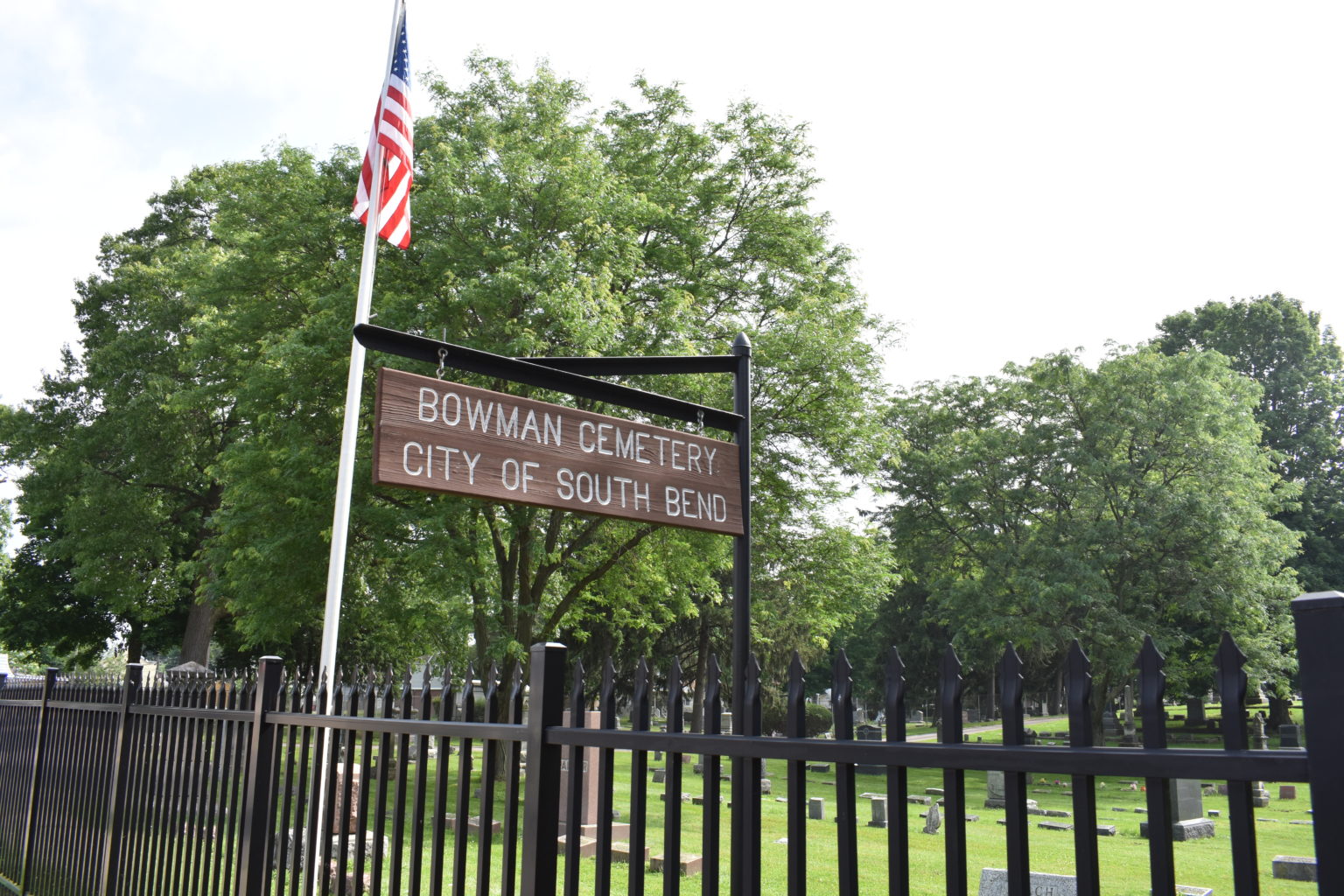
In 1835, Mr. Jacob Bowman gave a half acre of the corner of his farm for a burial ground intended for Dunkard’s or German Baptists. The land once considered so far out of the town limits has been embraced by neighborhood all around. The original tract has been enlarged several times to its current six acre property. Bowman Cemetery was turned over to the City of South Bend in 1957 when the private Bowman Cemetery Association, established in 1876, could no longer maintain the property. The view to the north from the entrance is of a terraced lawn.
Bowman Cemetery consists of three distinct sections, and represents the characteristics of a municipal cemetery. In great contrast with the later circular lawn movement designs of City Cemetery, Bowman cemetery plats are very regular, with virtually no curved paths. In section three are three round plats, located as opposite points in the section. These round forms, particularly the middle one, were inevitably designed to serve as visual landmark to direct the viewer and encourage the walk-through. There are many towering trees on the property. Separated from Bowman Cemetery by only a chain link fence is the Rosehill Jewish Cemetery. The current is the second location of the cemetery, as the graves were removed from their original location on the property where Singer built its factories on Madison Street between North Niles Avenue and the East Race in 1868.
